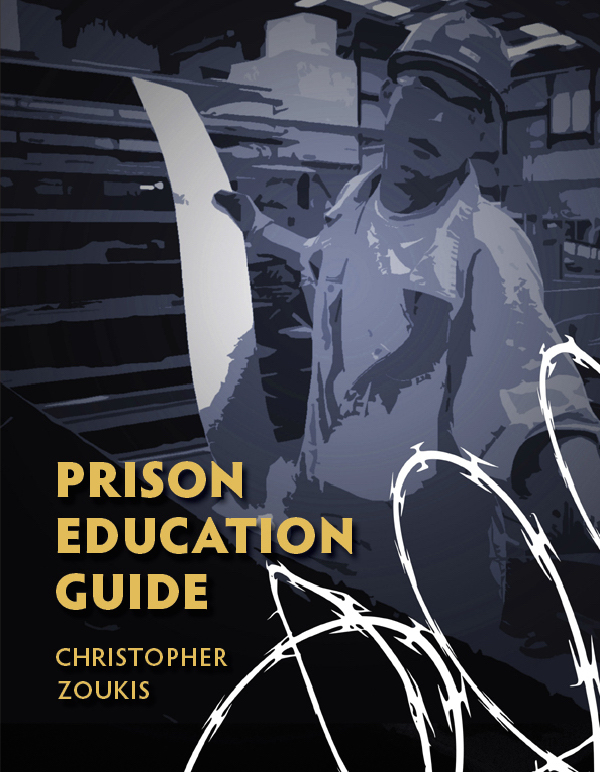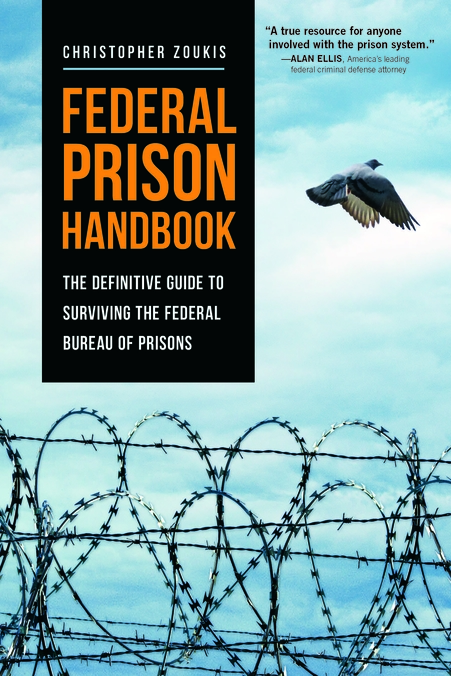Federal Habeas Corpus: Role of the Magistrate Judge
by Dale Chappell
District court judges in the federal courts have always had judicial assistants, in addition to law clerks, helping with their caseloads. Long before magistrate judges became what they are today, they were called “commissioners,” who were basically lawyers hired on an as-needed basis.
But in 1958, Congress passed the Federal Magistrates Act (“FMA”), abolishing the commissioners and creating career positions known as “magistrates.” The idea was that these full-time judicial officers would handle procedural matters, while the district judges handled the trying of cases. The Judicial Improvements Act of 1990 added the word “judges” to the magistrate’s title.
Authority of the
Magistrate Judge
Magistrate judges, though, are not really “judges” in the sense that a district judge is; magistrates get their authority from Congress, while district judges get their authority from the Constitution (after being appointed by the President). Magistrate judges also have limited terms of employment, and district judges are appointed under Article III for life.
While this limits the magistrate judge’s authority, the magistrate is the person you will deal with most often in your habeas case. Regardless of whether you want your case handled by a magistrate judge, the Supreme Court says the FMA, under 28 U.S.C. § 636, authorizes the district court to turn your habeas case over to a magistrate. McCarthy v. Bronson, 500 U.S. 136 (1991). Some district courts refer all habeas cases to magistrates under local rules or standing orders, and some courts leave it up to the judge in each case.
There is a big difference between federal and state prisoners when it comes to a magistrate deciding a habeas case. For federal prisoners filing a motion under 28 U.S.C. § 2255, the magistrate lacks the authority to decide the outcome of that kind of habeas case. This is true because the magistrate would be reviewing the validity of a ruling in a federal court proceeding. This implicates Article III of the Constitution. A magistrate judge does not have jurisdiction, then, to decide the outcome of a § 2255 motion, so the judgment would be invalid. See Brown v. United States, 748 F.3d 1045 (11th Cir. 2014).
However, a magistrate can and usually does decide the outcome in a habeas case filed by a state prisoner under 28 U.S.C. § 2254. The criminal judgment in a state case is entered by a judicial forum not connected to the federal court where the petition is being decided. This causes no constitutional problems for magistrates entering judgments in federal habeas cases for state prisoners. See United States v. Johnston, 258 F.3d 361 (5th Cir. 2001).
Types of Orders by the
Magistrate Judge
There are two types of orders in habeas cases by a magistrate judge: (1) dispositive that decide the outcome of the case and (2) non-dispositive that decide only a proceeding within the case. Examples of non-dispositive orders include appointment of counsel, discovery motions, and determining in forma pauperis status for proceeding without payment of court fees. While a magistrate cannot enter any dispositive orders in a § 2255 case (because it would close the case), it can do so in a § 2254 case. But that’s only if both the state prisoner and the state prosecutor consent to a magistrate handling the outcome of the case.
To challenge a magistrate judge’s non-dispositive order, you do not file an appeal. Instead, § 636 and Federal Rule of Civil Procedure 72(a) require you to file an “objection” to the district judge within 14 days of the magistrate’s order. If you wait until the Report and Recommendation (“R&R”) to object to the magistrate’s order, you’ll be too late. Non-dispositive orders and the R&R are two different things handled in different ways.
Hearings Held by the
Magistrate Judge
One of the main functions of the magistrate judge is to hold any hearings on your habeas petition, when required. Usually, this is an evidentiary hearing to sort out the facts you’ve alleged in your petition. Since these hearings come down to credibility findings by the magistrate, if the district judge disagrees with those findings, he must hold a new hearing and make the credibility findings himself. United States v. Scribner, 832 F.3d 252 (5th Cir. 2016). But the district judge is only obligated to review the magistrate’s findings if you object to the R&R. Otherwise, he just “adopts” the R&R as the court’s opinion, and your case is closed.
Objections to the Magistrate Judge’s Report and Recommendation
It is critical that you object to the R&R if you want to properly appeal the denial of your habeas petition. To object to the R&R, you must first file your objections on time. You have 14 days from the date of the R&R to file your written objections in the district court. Under Federal Rule of Civil Procedure 6(d), three days are added to the date of the R&R for mailing delays, so you really have 17 days to get them filed. And don’t forget that your legal papers are considered “filed” under the “prison mailbox rule” when you hand them to prison officials for mailing. See Thompson v. Raspberry, 993 F.2d 513 (5th Cir. 1993).
And don’t be afraid to ask for an extension of time to file your objections. Rarely does anyone get their objections filed within such a short timeframe, not even lawyers with a full staff. Courts routinely grant extensions of time to file R&R objections, since the time limit “is not, in the traditional sense, of the essence.” Patterson v. Mintzes, 717 F.2d 284 (6th Cir. 1982).
If you happen to file your objections to the R&R late and the court considers them anyway, they are deemed properly filed. That’s true whether the court ignores that you’re late or simply decides to hear them despite your being late. Most courts agree that the interests of justice require a court to hear late-filed objections. Some courts have treated objections filed after a judgment is entered as a motion to “alter or amend” the judgment under Federal Rule of Civil Procedure 59(e) (if filed within 28 days). See Global NAPs Inc. v. Verizon New Eng., Inc., 489 F.3d 13 (1st Cir. 2007).
Be aware that raising a new claim in your R&R objections usually won’t be heard by the court, unless the claim is a “miscarriage of justice” (like actual innocence). See United States v. Garcia, 2019 U.S. Dist. LEXIS 1207 (E.D. Cal. Jan. 2, 2019).
If the government responds to your objections (and they usually don’t), the courts aren’t clear on whether you may then file a reply to that response. Some courts say that the statutes and rules governing objections only allow for a “response” by the government and not any replies after that. But some courts have no problem with a reply. It seems to be up to the judge, so ask permission if you want to reply.
Review of the R&R by
the District Judge
If you don’t object to the R&R, the district judge usually adopts the R&R as the court’s opinion without even reading it. And the judge is allowed to do this. But if the judge decides to review the R&R without your objections, the R&R’s findings must be upheld unless they are “clearly erroneous” or contrary to law. This is the same standard of review the district judge uses when reviewing your challenge to any non-dispositive orders by the magistrate judge.
However, when you file objections, the district judge is required to review the R&R de novo, which means the district judge is supposed to take a fresh look at the issues in the R&R without any deference to the magistrate’s opinion. The district judge may then accept, reject, or modify the R&R as needed. He can even “recommit” the R&R back to the magistrate with further instructions, such as holding another evidentiary hearing.
Appealing After a Report and Recommendation Is Accepted
If you objected to the R&R, you have effectively “preserved” your issues for an appeal. But if you failed to file any objections, you may have waived your right to appeal those issues, even if you’re granted a certificate of appealability (“COA”) by the court to appeal those issues. This varies by circuit, so you may have to research the most recent court decisions in your circuit on what rule applies.
Unfortunately, the Supreme Court hasn’t been much help. In Thomas v. Arn, 474 U.S. 140 (1985), the Court acknowledged that courts of appeals could create their own rules on whether to permit an appeal after a failure to object to an R&R. And every court of appeals has adopted some kind of rule limiting an appeal after an R&R is adopted by the district judge without any objections.
While some courts say that Thomas held that a failure to object waives any appeal, that is not what the case was about. The only issue decided in Thomas was whether the court of appeals’ firm waiver rule violated the FMA or the Constitution. The Court held that a firm waiver is fine as long as notice is given that the failure to object to the R&R would result in the forfeiture of those issues on appeal.
Conclusion
The magistrate judge has more than a ministerial role in habeas cases. Indeed, the person having a lot of say in your habeas case is the magistrate judge. The district judge is ultimately in control, but the magistrate’s opinion carries great weight. Making sure you understand when and how to challenge anything the magistrate does in your habeas case will prevent any unintentional waivers of important issues in your case.
As a digital subscriber to Criminal Legal News, you can access full text and downloads for this and other premium content.
Already a subscriber? Login





